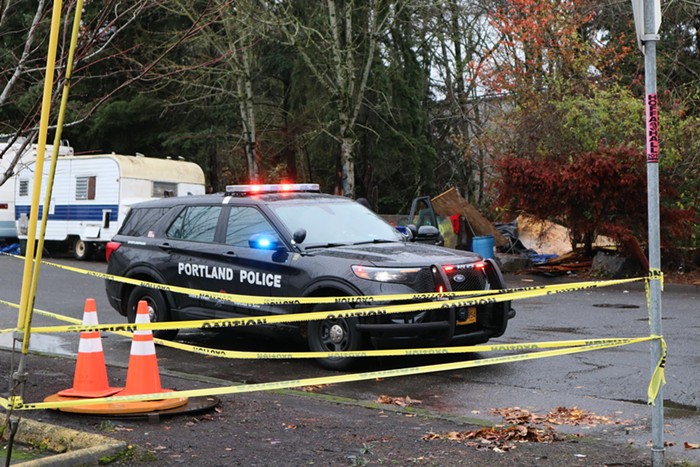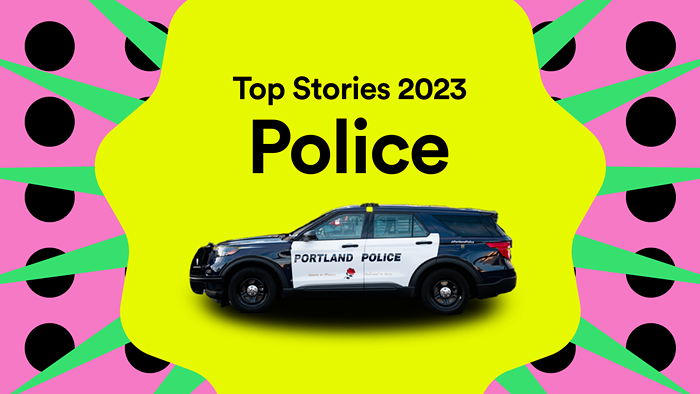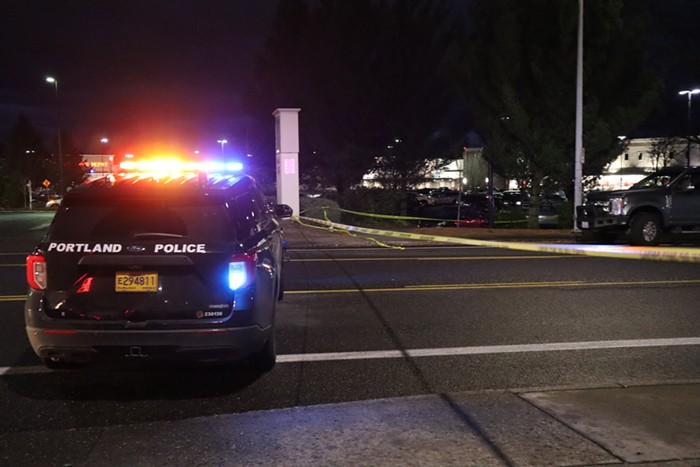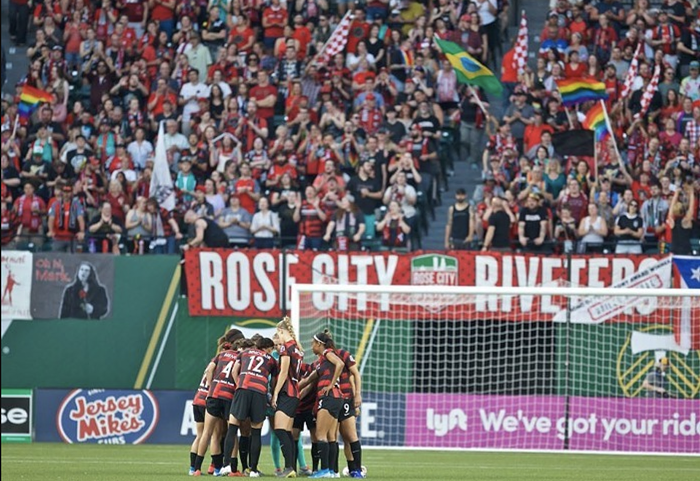
Hall Monitor is a regular column on issues related to Portland City Hall and its influence on the community it serves.
—
On Saturday morning, hundreds of law enforcement officers swarmed into Portland, sent to monitor a potentially violent rally organized by the Proud Boys, a national far-right organization that has ties to white nationalist and militia groups. But it was the police, not the Proud Boys, who left Portlanders bloodied, bruised, and traumatized by violence by the day’s end.
The Proud Boys billed Saturday’s gathering as a rally to “take back” Portland from those engaged in the city’s months of nightly protests for racial justice and against police brutality. In preparation for the event—which, before it began, bore many of the hallmarks of other far-right gatherings in Portland that have turned violent—Oregon Governor Kate Brown preemptively announced a state of emergency in Portland. She also made a few significant changes to police leadership.
A week earlier, Portland Mayor Ted Wheeler banned the Portland Police Bureau (PPB) from using CS gas—a potent and dangerous tear gas favored by law enforcement agencies—on any protesters in the city, regardless of circumstances. Wheeler’s prohibition extended to all officers working under the command of PPB. When Wheeler then asked the Oregon State Police (OSP) and Multnomah County Sheriff’s Office (MCSO) to help Portland officers respond to the upcoming Proud Boys rally and its related counter-demonstrations, those law enforcement agencies refused, explaining that they wouldn’t send their officers to the protests without the ability to use CS gas.
That’s when Brown intervened. On Friday, Brown announced that PPB would not be in charge of law enforcement’s response to the weekend’s protests; instead, OSP and MCSO would direct police actions on Saturday, with PPB under their command.
Brown’s decision not only meant that the majority of officers would be allowed to use CS gas, but also that officers in command leadership would not be beholden to a court order that keeps PPB officers from targeting specific people in the crowd. In early July, a federal judge approved a temporary restraining order against PPB, prohibiting Portland officers from arresting or using force against nonviolent legal observers or members of the press after police had declared a protest a “riot.” That federal order, however, does not apply to other law enforcement agencies, unless they are explicitly under PPB’s command.
With state and county law enforcement agencies calling the shots on Saturday, the rules and regulations that over the past several months have been specifically designed to curtail PBB's most violent tendencies were largely off the table.
It was the police, not the Proud Boys, who left Portlanders bloodied, bruised, and traumatized by violence by the day’s end.
While OSP and MCSO oversaw the official response to Saturday’s events, the changes in command had little effect on how law enforcement officers interacted with the Proud Boys and their supporters. As they have in the past, officers greeted the out-of-state far-right protesters as they arrived in North Portland’s Delta Park by flashing peace signs and turning a blind eye to many of the homemade shields, brandished firearms, and obscured license plates.
While many in Portland had prepared for the worst on Saturday, the Proud Boys’ gathering—which organizers had promised would draw thousands, yet only saw a few hundred attendees—ended after a few hours and with a few scuffles, but nothing like the kind of the mass injuries that have marked the group’s past gatherings. By late afternoon, the Proud Boys had mostly retreated to Vancouver, celebrating the event's success.
Law enforcement leadership also declared the day a victory, applauding each other on social media for making one arrest of a right-wing activist and keeping counter-protesters away from Delta Park.
After sunset, however, hundreds of those counter-protestors gathered before the steps of the Multnomah County Justice Center, the frequent site of Portland’s recent protests, to again demand justice for Black Americans killed and injured by police. They were also protesting local law enforcement’s soft treatment of armed white nationalists, as evidenced mere hours before. Not long into a series of speeches from Black activists, a loudspeaker behind a line of officers interrupted: “This is the police… Southwest Third Avenue is open to vehicular traffic. Move to the sidewalk or into the park. Do not remain in the roadway.”
It was not immediately clear which law enforcement agency had made this announcement, or which were there in person—many officers wore uniforms with only the words “police” printed on their backs.
The announcement threatened the deployment of tear gas and impact munitions against those standing in Southwest 3rd Avenue. There was little traffic aside from police vehicles. The group did not move.
For the next hour, police forced nonviolent protesters away from the Justice Center, sometimes tackling individuals or hitting them with batons and bursts of pepper spray. Lines of officers dressed in black armor barked commands, shouting at people to walk in a specific direction, then chasing those who complied. Journalists, who often stand closest to officers to document their actions, were shoved into trees, knocked off their feet, and pushed into protesters.
"Last night felt different. I felt like it was more emotional for them…. It was in the tone in which they were shouting, the level of violence in their voice."
Cata Gaitán, a independent reporter who has spent the past two months covering Portland protests (sometimes for the Mercury), said she was shoved at least a dozen times by police while she was following their demands to disperse. While she’s seen police shove and beat people who were following orders on previous nights, Gaitán said there was something that made Saturday evening’s assaults stand out.
“Last night felt different,” Gaitán said on Sunday. “I felt like it was more emotional for them…. It was in the tone in which they were shouting, the level of violence in their voice. They would crack jokes with each other. But when they interacted with protesters, it was as if they were interacting with a different subset of humans.”
After most protesters had been dispersed—and some arrested—the police departed, holding onto the sides of unmarked vans and waving at the remaining people left stunned and injured on the sidewalks.
Gaitán said she heard an officer cheerily yell “See you tomorrow!” as his van drove away.
It’s hard to pinpoint why police seemed especially emboldened to silence dissent Saturday night. Perhaps it was because far-right activists who support police brutality had just been in town. Maybe it was the knowledge that Gov. Brown had released the commanding officers of their recent legal constraints. Or perhaps it was simply the boiling over of resentment from a privileged class of armed, untouchable public employees whose powers are finally being challenged.
On Friday afternoon, as the city prepared for the Saturday protests, Mayor Wheeler released a “letter to the community” that explained where he and other Oregon lawmakers stand on far-right hate groups like the Proud Boys and their heavily armed allies.
“Oregon law prohibits paramilitary activity,” Wheeler wrote. “Organizers of and likely participants in the September 26 event have openly discussed tactical operations and military-style formations that lead us to believe that they are operating as an unauthorized private militia.”
Wheeler’s sentiment could just as easily apply to the hundreds of armored, organized police officers who attacked Portlanders on Saturday night. The key difference is that on Saturday in Portland, law enforcement's use of force—regardless of if it was justified—was completely authorized.
“They moved like an army,” Gaitán said of the police Saturday night. “Like an invading force.”

















